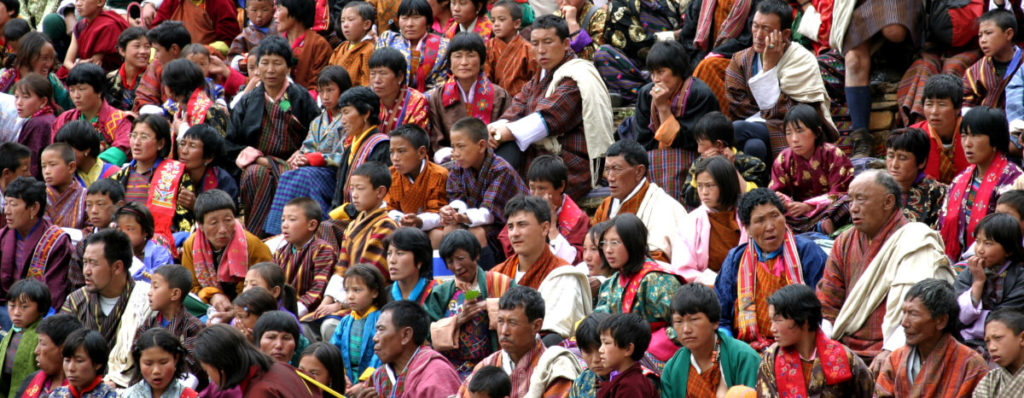People of Bhutan
People of Bhutan more than 75% of the total population, of little more than 750,000 people, lives in rural areas. And agriculture is the primary source of their livelihood. The population, except in a few major towns, is sparsely distributed. Villages are separated by rugged mountains, vast valleys, and rivers.
Until very recently, there was not much communication among the villages, even though they were situated in the same districts. Now, telecommunication facilities are reaching remote parts of the country.
Some scholars conclude that the absence of communication facilities in the past have led to the development of several different languages and dialects in a small country. There are 18 languages and dialects spoken by the people in different parts of the country.
The benefit of inevitable but scattered settlements across the valleys and over the mountains is the strong sense of independence in the Bhutanese people. Generally, people are bold, honest, and independent with readiness for open and crude jokes for humor.
One very common attribute of all Bhutanese is the sense of hospitality. It is a rare incident where even a stranger is unwelcomed by a Bhutanese. This is a unique social fiber that greatly contributes to strengthening the country social harmony.
The people hold a strong belief that being good to others brings them good karma that will make the present and next life happy and better. The characteristics of the Bhutanese hinge on the tenets of Buddhism which is followed as the state religion.
The food habits of the Bhutanese do not differ much. Rice is the staple in the southern and western regions where paddy is grown aplenty. And people in the central and the north live on wheat, buckwheat, barley, and maize.
One food habit of Bhutanese that fascinates and at times amuses a foreigner is eating chili a vegetable. Further, those who live in the high mountains in harsh weather conditions rear yaks. Their dairy products are sold to those living in the lowlands. Earlier the herders would barter the dairy products for day to day essentials.
Bhutan’s population can be categorized into three major ethnic groups: Ngalongs, Sharchops, and Nepalese. The ancestors of the Nepalese in Bhutan had come to the country as economic migrants in the early 19th century. They mostly live in the southern part of the country.
The western and central regions of Bhutan have the Drukpa ethnic groups. They are considered to be of Mongoloid and Tibetan origin.
The largest ethnic group’s Sharchops is believed to be the first inhabitants of Bhutan. Their exact origin still remains unknown. However, the ethnic group shares similarities of physical attributes with that of Indo-Mongolian race. They mostly live in the eastern region of the country.
The national dress is gho (for men) and kira (for women). The gho is a large robe pulled up till the knee forming a fold in the front which is mocked at as the largest pocket in the world. And the kira resembles a kimono.



